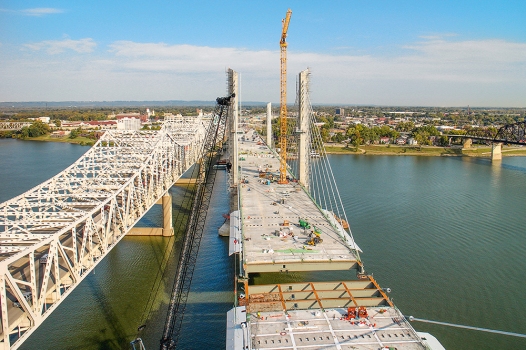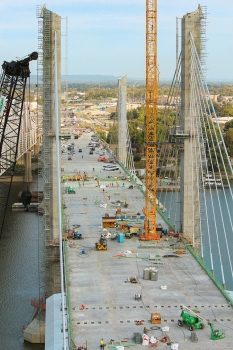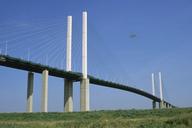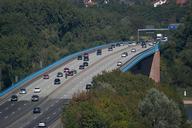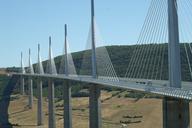Abraham Lincoln Bridge in Louisville, USA
The Abraham Lincoln Bridge is part of the large infrastructure project "Ohio River Bridges Downtown Crossing" in Louisville, Kentucky. The bridge that was originally named Louisville Downtown Crossing accommodates northbound traffic of the Interstate I-65 and connects the centre of Louisville in Kentucky with Jeffersonville in Indiana. In the meantime, the structure has been named after Abraham Lincoln, the 16th president of the USA, who was born in Kentucky in the 19th century and grew up in Indiana.
Media
The Abraham Lincoln Bridge runs parallel to the John F. Kennedy Memorial Bridge, which was opened to traffic in 1963, and will accommodate all northbound I-65 traffic once the project has been completed. The John F. Kennedy Memorial Bridge will then carry southbound traffic.
Stay cable bridge with three pairs of pylons is 642 m long
The new bridge was built as a stay cable bridge with three pairs of pylons. The stay cables hold the six lane composite steel/concrete deck in place. The bridge has a total length of approximately 642 m (2,106 ft) and consists of two 228.6 m (750 ft) long main spans and two 92.35 m (303 ft) long side spans.
176 stay cables and 597 t of strand were installed
For this project, DSI produced and supplied a stay cable system as well as a measuring system including equipment. Furthermore, DSI provided technical assistance and on-site supervision. Before installation started, two successful full-size tests with Type DG-P37 and DG-P109 stay cables were performed. In total, 176 stay cables including anchorages and 597 t of strand were needed.
DSI also supplied 88 internal hydraulic dampers. The stay cables were successfully installed by the General Contractor, assisted by DSI technicians and engineers, from November 2014 to November 2015. DSI was awarded the contract to supply a measuring system including a remote controlled readout unit for the longterm monitoring of the forces acting on the stay cables. In total, 264 sensors for type 0.62" strand and three readout units equipped with a remote system were supplied.
The first lanes were opened to traffic approximately four months earlier than planned at the beginning of December 2015. The complete Downtown Crossing Project including the rehabilitation of the Kennedy Bridge and the connecting roads on both sides of the Ohio River was expected to be completed by the end of 2016.

